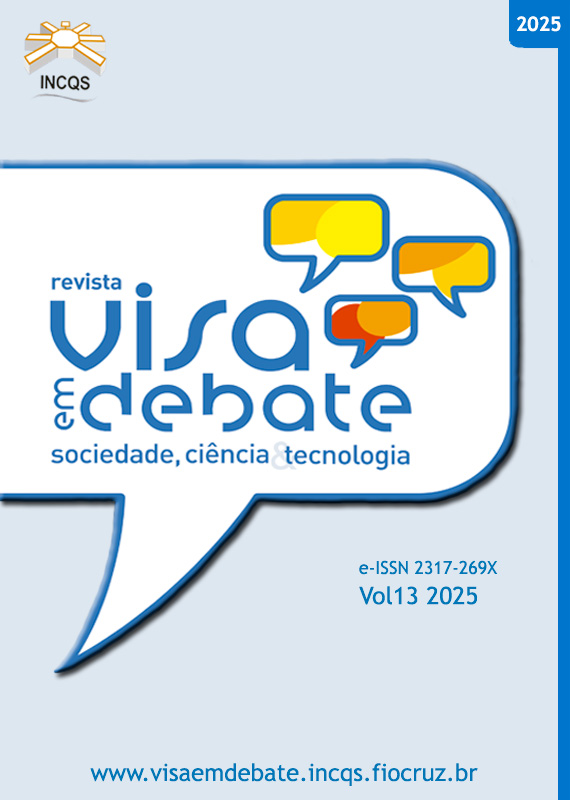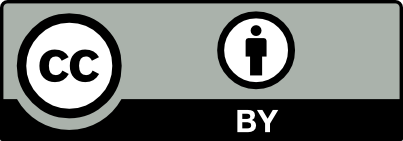Compliance of information in biscuits labels: a cross-sectionalanalysis on compliance with current legal regulations
Vigil Sanit Debate, Rio de Janeiro, 2025, v.13: e02297 | Published on: 11/08/2025
DOI:
https://doi.org/10.22239/2317-269X.02297Keywords:
Nutritional Information, Food Labeling, Processed Foods, Foods, Food LegislationAbstract
Introduction: Nutritional information on labels allows consumers to know all the components of the product, helping them determine whether it meets their preferences and needs. Objective: To analyze whether labels on industrially and artisanally prepared biscuits sold in the southern region of Brazil comply with current food labeling legislation. Method: The data collection period was from May to September 2023. Cookies sold in supermarkets in the cities of Pelotas-RS and Santa Maria-RS were evaluated. During visits to supermarkets, photographic records of the biscuit labels were taken. The labels were checked in accordance with a checklist, which was prepared and structured based on current standards that regulate food labeling. Results: 60 cookies were analyzed, of which 22 labels (36.7%) were for artisanal cookies and 38 labels (63.3%) were for industrial cookies. It was found that only 23 (38.3%) presented packaging with the new nutritional food labeling, and 26.0% of the labels did not contain the claim of cookie or biscuit as the sales denomination. The items with the lowest label adequacy were total and added sugars. Most labels did not feature the front labeling that highlights the high content of added sugar, sodium, and saturated fat. Of the industrial biscuit labels analyzed, 80.0% had correct allergen information. Conclusions: It was found that many cookie labels that are being sold still need to comply with current general and nutritional food labeling legislation.
Downloads
References
1. Geraldo ML, Carvalho NB, Elias LAS, Campos JM, Sousa KROV, Silva VM. Avaliação do impacto da nova rotulagem na indústria de alimentos. Braz J Develop. 2023;9(6):19012-31. https://doi.org/10.34117/bjdv9n6-021
2. Sousa LML, Stangarlin-Fiori L, Costa EHS, Furtado F, Medeiros CO. Use of nutritional food labels and consumers’confidence in label information. Rev Nutr. 2020;33:1-18.https://doi.org/10.1590/1678-9865202033e190199
3. Nascimento C, Raupp SMM, Townsend RT, Balsan GA, Minossi V. Conhecimento de consumidores idosos sobre rotulagem de alimentos. Rev Epidemiol Contr Infec.2013;3(4):144-7. https://doi.org/10.17058/reci.v3i4.4064
4. Brasil. Lei Nº 8.078, de 11 de setembro de 1990. Dispõe sobre a proteção do consumidor e dá outras providências. Diário Oficial União. 12 set 1990.
5. Santana FCO. Rotulagem para alergênicos: uma avaliação dos rótulos de chocolates frente à nova legislação brasileira. Braz J Food Technol. 2018;21:1-8. https://doi.org/10.1590/1981-6723.03218
6. Agência Nacional de Vigilância Sanitária – Anvisa. Relatório de análise de impacto regulatório sobre rotulagem nutricional. Brasília: Agência Nacional de Vigilância Sanitária; 2019[acesso 10 dez 2023]. Disponível em: https://www.gov.br/anvisa/pt-br/assuntos/regulamentacao/air/analises-de-impacto-regulatorio/2019/relatorio-de-analise-de-impacto-regulatorio-sobrerotulagem-nutricional.pdf/view
7. Agência Nacional de Vigilância Sanitária – Anvisa. Resolução RDC Nº 429, de 8 de outubro de 2020. Dispõe sobre a rotulagem nutricional dos alimentos embalados. Diário Oficial União. 9 out 2020.
8. Agência Nacional de Vigilância Sanitária – Anvisa. Instrução normativa N° 75, de 8 de outubro de 2020. Estabelece os requisitos técnicos para declaração da rotulagem nutricional nos alimentos embalados. Diário Oficial União. 9 out 2020.
9. Agência Nacional de Vigilância Sanitária – Anvisa. Resolução RDC Nº 359, de 23 de dezembro de 2003. Aprovar o regulamento técnico de porções de alimentos embalados para fins de rotulagem nutricional. Diário Oficial União. 26 dez 2003.
10. Agência Nacional de Vigilância Sanitária – Anvisa. Resolução RDC Nº 360, de 23 de dezembro de 2003. Dispõe sobre o regulamento técnico sobre informação nutricional de alimentos e bebidas. Diário Oficial União. 26 dez 2003.
11. Agência Nacional de Vigilância Sanitária – Anvisa. Resolução RDC Nº 54, de 12 de novembro de 2012. Dispõe sobre o regulamento técnico sobre informação nutricional complementar. Diário Oficial União.13 nov 2012.
12. Agência Nacional de Vigilância Sanitária – Anvisa. Resolução RDC Nº 727, de 1 de julho de 2022a. Dispõe sobre a rotulagem dos alimentos embalados. Diário Oficial União. 6 jul 2022.
13. Agência Nacional de Vigilância Sanitária – Anvisa. Resolução RDC Nº 259, de 20 de setembro de 2002. Aprova o regulamento técnico sobre rotulagem de alimentos embalados. Diário Oficial União. 23 set 2002.
14. Agência Nacional de Vigilância Sanitária – Anvisa. Resolução RDC Nº 136, de 8 de fevereiro de 2017. Estabelece os requisitos para declaração obrigatória da presença de lactose nos rótulos dos alimentos. Diário Oficial Unão.9 fev 2017.
15. Associação Brasileira das Indústrias de Biscoitos, Massas Alimentícias e Pães & Bolos Industrializados - Abimapi. Home. São Paulo: Associação Brasileira das Indústrias de Biscoitos, Massas Alimentícias e Pães & Bolos Industrializados; 2023[acesso 8 ago 2023]. Disponível em: https://www.abimapi.com.br/
16. Agência Nacional de Vigilância Sanitária – Anvisa. Resolução RDC Nº 711, de 1° de julho de 2022. Dispõe sobre os requisitos sanitários dos amidos, biscoitos, cereais integrais, cereais processados, farelos, farinhas, farinhas integrais, massas alimentícias e pães. Diário Oficial União. 6 jul 2022.
17. Associação Brasileira da Indústria de Alimentos - ABIA. Home. São Paulo: Associação Brasileira da Indústria de Alimentos, 2023[acesso 8 ago 2023]. Disponível em: https://www.abia.org.br/
18. United Nations Educational, Scientific and Cultural Organization - Unesco. Handcrafts and design; handicrafts; seal of excellence programme. Paris; United Nations Educational, Scientific and Cultural Organization; 2005[acesso 12 jul 2023]. Disponível em: http://portal.unesco.org.
19. Brasil. Lei Nº 10.674, de 16 de maio de 2003a. Obriga a que os produtos alimentícios comercializados informem sobre a presença de glúten, como medida preventiva e de controle da doença celíaca. Diário Oficial União. 17 maio 2003.
20. Agência Nacional de Vigilância Sanitária – Anvisa. Resolução RDC Nº 819, de 9 de outubro de 2023. Altera a resolução de diretoria colegiada RDC Nº 429, de 8 de outubro de 2020, que dispõe sobre a rotulagem nutricional dos alimentos embalados. Diário Oficial União. 10 out 2023.
21. Miranda LLS, Soares CS, Almeida CAF, Almeida DKC, Gregório EL, Amaral DA. Análise da rotulagem nutricional de pães de forma com informação nutricional complementar comercializados no município de Belo Horizonte – MG. HU Rev. 2017;43(3):211-7. https://doi.org/10.34019/1982-8047.2017.v43.2814
22. Guimarães VO, Lima HCFM, Moraes ARF. Avaliação das rotulagens de alimentos frente à legislação vigente e do uso de alegações não regulamentadas. Rev Inst Adolfo Lutz. 2022;81:1-18. https://doi.org/10.53393/rial.2022.v.81.39118
23. Brasil. Lei Nº 8.078, de 11 de setembro de 1990. Dispõe sobre a proteção do consumidor e dá outras providências. Diário Oficial União. 12 set 1990.
24. Lee AR, Ng DL, Dave E, Ciaccio EJ, Green PHR. The effect of substituting alternative grains in the diet on the nutrient intake of patients with celiac disease. J Hum Nutr Diet. 2017;23(3):261-6. https://doi.org/10.1111/j.1365-277X.2010.01112
25. Catassi C, Alaedini A, Bojarski C, Bonaz B, Bouma G, Carroccio A et al. The overlapping area of non-celiac gluten sensitivity (NCGS) and wheat-sensitive irritable bowel syndrome (IBS): an update. Nutrients. 2017;9(11):1-17. https://doi.org/10.3390/nu9111268
26. Montera VSP, Martins APB, Mais LA, Canella DS. Information on food additives on food labels in Brazil: a critical analysis. Rev Saúde Pública. 2023;57:1-7. https://doi.org/10.11606/s1518-8787.2023057004371
27. Mozaffarian D, Fahimi S, Singh GM, Micha R, Khatibzadeh S, Engell RE et al. Global sodium consumption and death from cardiovascular causes. N Engl J Med. 2014;371(7):624-34. https://doi.org/10.1056/nejmoa1304127
28. Trieu K, Neal B, Hawkes C, Dunford E, Campbell N, Rodriguez-Fernandez R. Salt reduction initiatives around the world: a systematic review of progress towards the global target. PloS One. 2015;10(7):1-22. https://doi.org/10.1371/journal.pone.0130247
29. Kliemann N, Veiros MB, González-Chica DA, Proença RPC. Serving size on nutrition labeling for processed foods sold in Brazil: relationship to energy value. Rev Nutr. 2016;29(5):741-50.https://doi.org/10.1590/1678-98652016000500012
30. Silva ARCS, Braga LVM, Anastacio LR. Coexistence of high content of critical nutrients and claims in food products targeted at brazilian children. Rev Paul Pediatr. 2023;41:1-8.https://doi.org/10.1590/1984-0462/2023/41/2021355
31. Japur CC, Assunção DCB, Batista RAB, Penaforte FRO. Disponibilidade de informação sobre quantidade de açúcar em alimentos industrializados. Cienc Saúde Colet. 2021;26(3):1153-62.https://doi.org/10.1590/1413-81232021263.07872019
32. Malik VS, Pan A, Willett WC, Hu FB. Sugar-sweetened beverages and weight gain in children and adults: a systematic review and meta-analysis. Am J Clin Nutr. 2013;98(4):1084-102.https://doi.org/10.3945/ajcn.113.058362
33. Te Morenga LA, Howatson AJ, Jones RM, Mann J. Dietary sugars and cardiometabolic risk: systematic review and meta-analyses of randomized controlled trials of the effects on blood pressure and lipids. Am J Clin Nutr. 2014;100(1):65-79. https://doi.org/10.3945/ajcn.113.081521
34. Hu FB, Malik VS. Sugar-sweetened beverages and risk of obesity and type 2 diabetes: epidemiologic evidence. Phys Behav. 2010;100(1):47-54. https://doi.org/10.1016/j.physbeh.2010.01.036
35. Siri-Tarino PW, Sun Q, Hu FB, Krauss RM. Saturated fatty acids and risk of coronary heart disease: modulation by replacement nutrients. Curr Ather Rep. 2010;12(6):384-90.https://doi.org/10.1007/s11883-010-0131-6
36. Hawley KL, Roberto CA, Bragg MA, Liu PJ, Schwartz MB, Brownell KD. The science on front-of-package food labels. Public Health Nutr. 2013;16(3):430-9.https://doi.org/10.1017/S1368980012000754
37. Lopes JF, Carvalho MA, Machado NC. Rotulagem de alérgenos alimentares em alimentos embalados segundo grupos alimentares da pirâmide brasileira: análise da descrição, riscos e ambiguidades. Rev Paul Pediatr. 2022;40:1-7.https://doi.org/10.1590/1984-0462/2022/40/2021079in
38. Muraro A, Hoffmann-Sommergruber K, Holzhauser T, Poulsen L, Gowland M, Akdis C et al. Diretrizes de alergia alimentar e anafilaxia da EAACI. proteger os consumidores com alergias alimentares: compreender o consumo alimentar, cumprir os regulamentos e identificar necessidades não satisfeitas. Alergia. 2014;69:1464-72.https://doi.org/10.1111/all.12453
39. Taylor SL, Baumert JL, Kruizinga AG. Remission of eosinophilic esophagitis after a trial of allergy-directed therapy. Clin Gastroent Hepatol. 2014;12(2):200-7. https://doi.org/10.1016/j.cgh.2013.08.009
40. Pawankar R, Canonica GW, Holgate ST, Lockey RF, Blaiss MS. Allergic diseases as a global public health issue. In: Pawankar R, Canonica GW, Holgate ST, Lockey RF, Blaiss MS, editors. White book on allergy: update 2013. Milwaukee: World Allergy Organization; 2013. p. 11-20.
41. McBride D, Keil T, Grabenhenrich L, Dubakiene R, Drasutiene G, Fiocchi A et al. The EuroPrevall birth cohort study on food allergy: baseline characteristics of 12,000 newborns and their families from nine European countries. Pediatr Allergy Immunol. 2012;23(3):230-9. https://doi.org/10.1111/j.1399-3038.2011.01254.x
42. Allemandi L, Castronuovo L, Tiscornia MV, Gutkowski P, Gijena J, Nessier C. Nutritional quality, child-oriented marketing and health/nutrition claims on sweet biscuit, breakfast cereal and dairy-based dessert packs in Argentina. Cad Saúde Pública. 2020;36(9):1-11. https://doi.org/10.1590/0102-311x00196619
Downloads
Published
License
Copyright (c) 2025 Health Surveillance under Debate: Society, Science & Technology

This work is licensed under a Creative Commons Attribution 4.0 International License.
COPYRIGHT ALLOWANCE The author (s) hereinafter designated as the ASSIGNOR hereby assign and transfer, free of charge, the ownership of the copyrights related to this ARTICLE to the Vigilância Sanitária em Debate: Sociedade, Ciência & Tecnologia (Health Surveillance under Debate: Society, Science & Technology) – Visa em Debate, represented by FUNDAÇÃO OSWALDO CRUZ, established at Av. Brasil, nº 4365, Manguinhos, Rio de Janeiro, RJ, Brazil, CEP 21045-900, under the conditions set out below: (a) The terms and conditions set forth in this Agreement shall apply to the following: 1. The ASSIGNOR declares that they s(he) is (are) the author (s) and owner (s) of the copyrighted property of the ARTICLE submitted. 2. The ASSIGNOR declares that the ARTICLE does not infringe the copyrights and / or other property rights of third parties, that the disclosure of images (if any) has been authorized and that they s(he) assume(s) full moral and / or property liability for its content, before third parties. 3. THE ASSIGNOR assigns and transfers all copyrights relating to the ARTICLE to the ASSIGNEE, especially the rights of editing, publication, translation into another language and reproduction by any process or technique. The ASSIGNEE becomes the exclusive owner of the rights related to the ARTICLE, and any reproduction, totally or partially, is prohibited in any other means of publicity, printed or electronic, without prior written authorization from the ASSIGNEE. 4. The assignment is free and, therefore, there will be no remuneration for the use of the ARTICLE by the ASSIGNEE.







